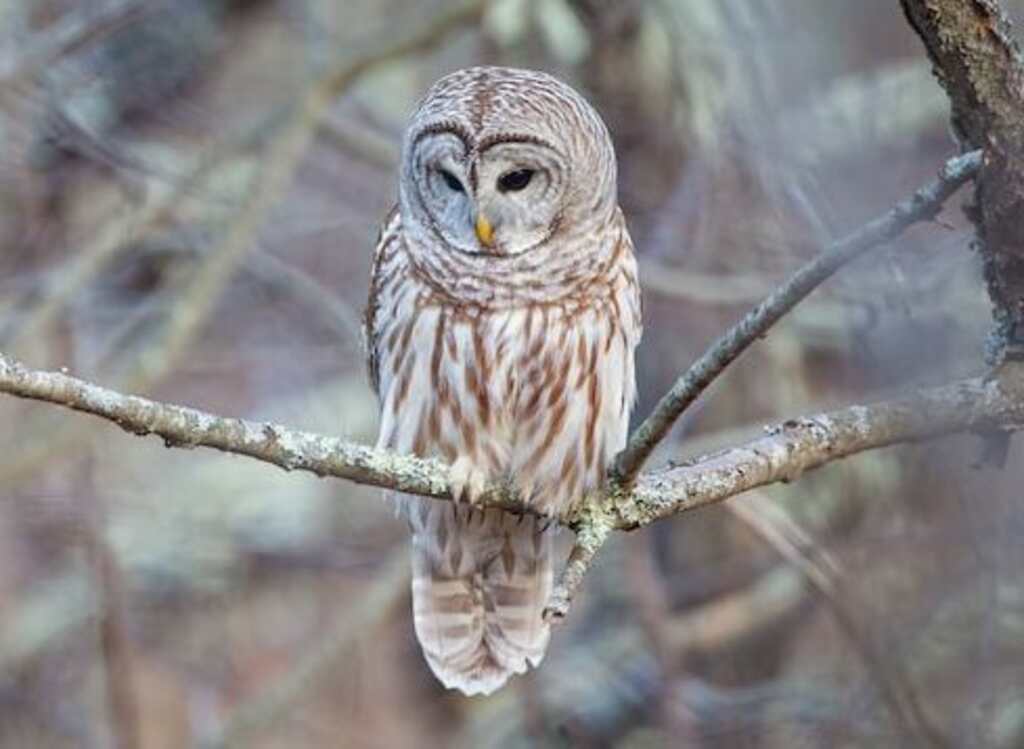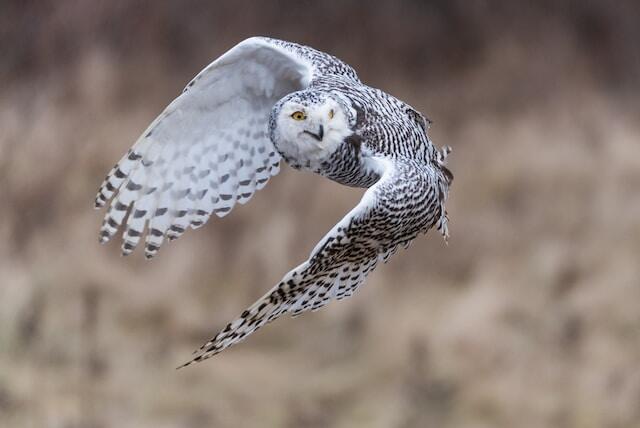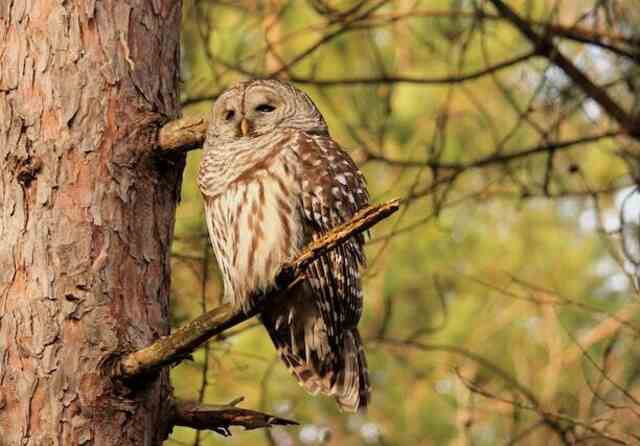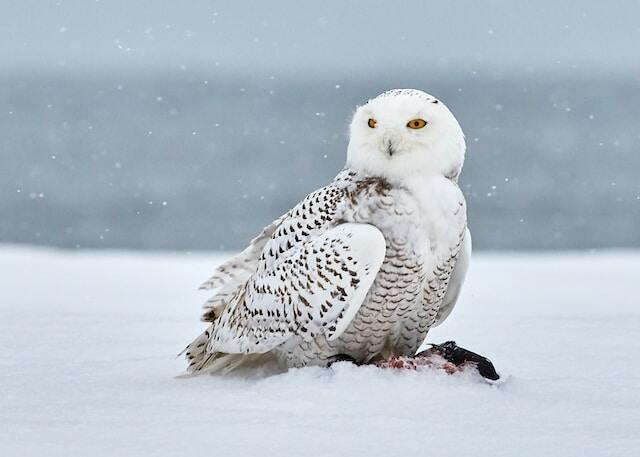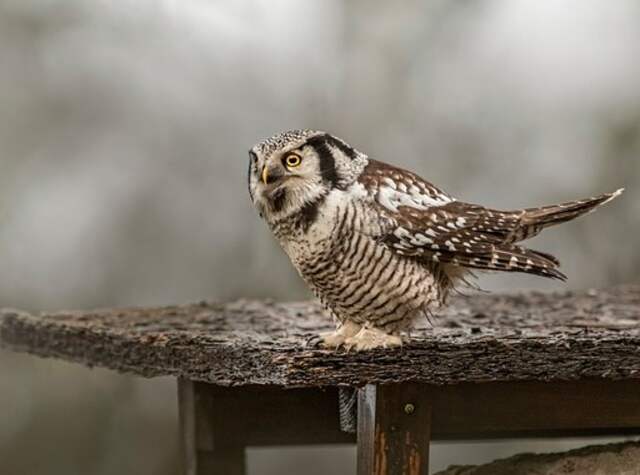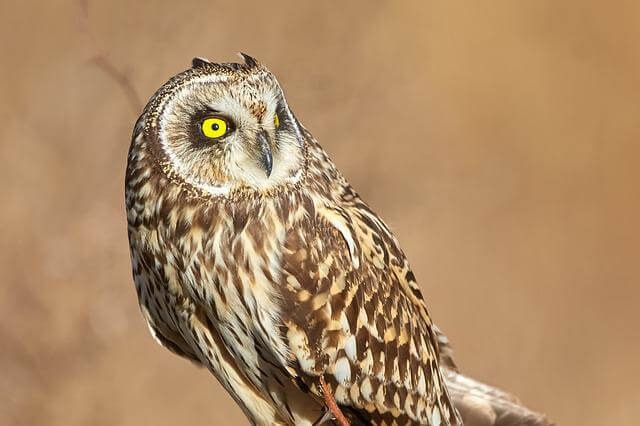Owls are fascinating creatures known for their silent flight and nocturnal hunting skills. But do owls eat rabbits? This question often arises among wildlife enthusiasts and curious minds alike. In this article, we will look into the hunting habits of owls, exploring whether rabbits are part of their diet. Join us as we uncover the dietary preferences of these majestic birds and learn more about their role in the ecosystem.
Table of Contents
- 1 The Fascinating World of Owls
- 2 Explanation of Owls as Birds of Prey
- 3 Overview of Owl Diets and Eating Habits
- 4 Focus on Owls Eating Rabbits
- 5 Owl Diets and Eating Habits
- 6 Rabbits as a Common Prey for Owls
- 7 The Hunt: How Do Owls Catch Rabbits?
- 8 The Meal: How Do Owls Eat Rabbits?
- 9 FAQs: Do Owls Eat Rabbits?
- 9.1 Can owls kill and eat large rabbits?
- 9.2 How do owls catch rabbits?
- 9.3 Can all owl species eat rabbits?
- 9.4 Do owls only eat live rabbits or will they eat dead ones too?
- 9.5 How do owls hunt and kill rabbits?
- 9.6 Are rabbits the only food source for owls?
- 9.7 Can owls and rabbits coexist peacefully in the same habitat?
- 10 Conclusion
- 11 Author
The Fascinating World of Owls
Owls are a group of birds of prey known for their unique physical features and exceptional hunting skills. These birds have a distinct facial disk that helps them to hear prey from great distances, even in complete darkness.
With specialized feathers that allow them to fly silently, owls are stealthy hunters that can take even the most agile prey by surprise.
As birds of prey, owls play an essential role in balancing ecosystems, controlling populations of rodents and other small animals.
Explanation of Owls as Birds of Prey
Birds of prey are carnivorous birds that feed on other animals for sustenance. They are characterized by sharp talons and hooked beaks used for hunting and consuming their prey. Owls belong to this category due to their predatory nature.
While there are over 200 species of owls worldwide, they all share similar characteristics that make them efficient hunters. Their sharp talons can easily grip onto their prey while their beaks tear off chunks of meat from the carcass.
Overview of Owl Diets and Eating Habits
Owls eat a variety of foods depending on factors such as their size, habitat type, and availability of food sources in the area. Some common foods include insects, rodents like mice and rats – which make up about 75% percent of an owl’s diet -, fish, snakes and other reptiles among others.
Most owls hunt at night or during crepuscular hours (twilight), when their preferred prey is most active. They often swallow their prey whole, using their crop for temporary storage while the food is slowly digested. Regurgitation of indigestible bones and fur in pellets is a common feature among owls.
Focus on Owls Eating Rabbits
Rabbits are a common prey item for many owl species due to their availability in many habitats. Although not all species of owls eat rabbits, those that do have specialized hunting techniques for capturing these elusive and fast-moving animals.
One such species is the Great Horned Owl, which has been known to hunt rabbits weighing up to three pounds. The owl’s sharp talons allows it to hold onto its prey while it uses its strong beak to tear apart the rabbit’s flesh.
While not all owl species eat rabbits, those that do have evolved unique hunting skills that enable them to capture these swift animals successfully. Understanding owl diets and eating habits is crucial in promoting conservation efforts and maintaining ecological balance in our ecosystems.
Owl Diets and Eating Habits
Explanation of Owl Digestive System
Owls are carnivorous birds of prey that primarily hunt small mammals, birds, and insects. Their digestive system is specifically designed to process this type of diet efficiently. Owls have a two-part stomach, where the first part (proventriculus) secretes digestive enzymes to break down food and the second part (gizzard) grinds the food into small particles for easier digestion.
The lining of an owl’s stomach is also covered in keratinized spines called gastric mills that aid in grinding up prey. These spines prevent large pieces of prey from passing through too quickly and ensure that all nutrients are extracted from the food before it is excreted.
Importance of Prey Size to Owls
Prey size is critical to owls’ survival because their digestive system can only process a certain amount of food at a time. If an owl consumes prey that is too big, it may not be able to digest it properly, leading to indigestion, weight loss or even death.
On the other hand, if their diet consists solely of small prey, they may not receive enough nutrition necessary for their health. Additionally, owls need to consume an adequate amount of calories each day because they have high energy demands due to their hunting techniques and nocturnal lifestyle.
Larger prey provides more calories per meal than smaller prey does. Therefore, while hunting for smaller prey requires less energy expenditure than hunting larger ones does; since it takes time for them digest their meals before they can eat again.
Comparison to Other Birds of Prey
Compared to other birds like eagles or hawks; who consume much larger prey than owls do per meal; as well as may not eat every day since they do not have high energy demands as owls do.
They rely on their sharp talons and strong beaks to capture and kill their prey, while owls use their keen senses and silent flight patterns to hunt in the dark.
Owls typically swallow their prey whole, including bones, fur, feathers and all. The indigestible portions of the prey are later regurgitated in the form of pellets.
These pellets help prevent blockages in the digestive tract and provide a window into what an owl has been eating, making it easier for researchers to study owl diets.
Owls are fascinating birds of prey with unique digestive systems that enable them to process small mammals efficiently.
Prey size is critical for their survival, so they consume smaller but more frequent meals than other birds of prey do; this accounts for their hunting techniques.
Special adaptations like gastric mills ensure that they extract all necessary nutrients from food before excretion occurs.
Rabbits as a Common Prey for Owls
When one thinks of owls, they might imagine them swooping down to catch mice or other small rodents. However, rabbits are actually a common prey item for many species of owls. This is because rabbits are fairly common in many habitats, and they provide an excellent source of nutrition for the birds.
Overview of Rabbit Populations
Rabbits can be found in many different types of habitats, including grasslands, forests, and even deserts. They are known for their rapid reproductive rates and have the ability to produce several litters in a year.
This means that there are often plenty of rabbits available for predators to hunt. In terms of size, rabbits range from small cottontails to larger hares.
The specific species that owls target will depend on their location and the type of owl in question. For example, burrowing owls may primarily hunt smaller rabbit species that live underground.
Rabbit Hunting Techniques for Owls
Owls have developed a variety of hunting techniques when it comes to catching rabbits. Some species prefer to hunt from a perch or tree branch and then swoop down onto their prey when the opportunity arises.
Others may actively pursue their target on foot before capturing it with their talons. One interesting strategy used by some owl species is called “still-hunting.” This involves remaining completely stationary while waiting for prey to come within range before attacking suddenly and quickly.
Importance of Rabbits in the Food Chain
Rabbits play an important role in many ecosystems, as they serve as both predator and prey. As herbivores, they help maintain plant populations by keeping them trimmed back- but they also serve as food sources for other animals such as foxes, coyotes, snakes, birds of prey- and even humans.
Owls are an important part of the food chain as they help keep rabbit populations in check. In areas where rabbits are overabundant, their grazing can have a negative impact on the ecosystem.
However, by predating on rabbits, owls help prevent this from happening and ensure that other animals lower in the food chain have access to resources as well.
Rabbits may not be the first animal that comes to mind when thinking about owl prey, but they are certainly an important one.
These small mammals provide a source of nutrition for many owl species and play a vital role in maintaining the balance of ecosystems.
The Hunt: How Do Owls Catch Rabbits?
Owls are skilled predators that have evolved unique hunting techniques to catch their prey. When hunting rabbits, owls utilize their keen senses and physical adaptations to effectively capture their quarry. One of the most important aspects of owl hunting is stealth and surprise.
Owls approach their prey silently, using their large wingspan to quietly glide through the air towards unsuspecting rabbits. In addition to stealth, owls also use a variety of physical adaptations to capture rabbits.
Their sharp talons are specially adapted for grasping prey and can exert an incredible amount of force when closing around a rabbit’s body. Additionally, owls possess powerful beaks that they use to quickly dispatch prey once it has been caught.
Explanation of Owl Hunting Techniques
Owls have several different techniques that they use when hunting for prey. One common technique used by many owl species is the sit-and-wait method.
This involves perching on a high branch or other elevated position and waiting for prey to come into view before swooping down for the kill. Another technique employed by owls is called “foot paddling.”
This involves slowly walking along the ground, using one foot at a time, while scanning for potential prey with its eyes and ears.
Some species of owl will engage in aerial acrobatics while in pursuit of prey. They may perform sudden twists and turns in midair while chasing a rabbit or other small animal.
Comparison to Other Predators’ Hunting Styles
Compared to other predators like hawks or eagles, owls tend to be more specialized hunters. While hawks may hunt during both day and nighttime hours and employ various techniques such as soaring over open fields or perching on treetops waiting for an opportunity to strike, owls tend to focus solely on hunting at night and use stealth as their primary weapon.
However, owls do share some similarities in hunting styles with other predators. For example, like many raptors, owls have excellent eyesight that allows them to spot prey from great distances.
Additionally, both owls and many other predators rely on their physical adaptations such as sharp talons and powerful beaks to capture and kill prey.
Importance of Stealth and Silence in Hunting
Stealth and silence are two of the most important weapons in an owl’s arsenal when hunting for rabbits. In fact, many owl species have evolved special feathers on their wings that help them fly silently through the air.
This is because rabbits have excellent hearing and can often detect predators approaching before they are seen. In addition to silent flight, owls also utilize other techniques to remain stealthy while hunting.
They may perch on a low branch or hide behind a tree trunk while waiting for prey to come within striking distance. By remaining motionless and blending into the surroundings, an owl can often catch its prey off guard with a sudden attack.
Overall, the unique hunting techniques employed by owls make them formidable predators that play an important role in controlling rabbit populations in many ecosystems.
By utilizing stealth and surprise attacks along with physical adaptations like sharp talons and powerful beaks, these birds of prey are able to capture their quarry efficiently and effectively.
The Meal: How Do Owls Eat Rabbits?
Overview of Owl Digestion Process
Once an owl has captured its prey, it begins the process of consuming it. Owls have a unique digestive system that allows them to break down their food in a highly efficient manner. The first step in this process is swallowing the prey whole, as owls do not have teeth to chew their food.
The food then moves down the esophagus and into the crop, where it is temporarily stored. From there, the food moves into the proventriculus, which is similar to a human stomach.
Here, digestive enzymes are secreted to start breaking down the prey. The partially digested food moves into the gizzard, which contains small stones or grit that help break down tougher parts of the prey such as bone and fur.
Importance of Regurgitation in Digestion
After thoroughly digesting their meal, owls will regurgitate pellets made up of indigestible parts such as bones and fur. This helps keep their digestive tract clean and prevents blockages from forming.
In addition to keeping their digestive system functioning properly, owl pellets are also an important source of information for researchers studying what these birds eat.
By examining owl pellets discovered in places like nesting sites or roosting areas can provide scientists with significant information about nearby prey populations and how they could be affected by factors like habitat loss or climate change.
Comparison to Other Birds’ Digestive Systems
While all birds have a similar basic digestive system consisting of a crop, proventriculus and gizzard, owls stand out due to their specialized adaptations for consuming larger prey items.
Unlike many other birds that feed primarily on insects or small animals like mice or fish which can be easily swallowed whole with little need for digestion, owls have evolved to be able to tackle much larger prey such as rabbits or even small deer.
This has required the development of unique adaptations such as a highly expandable esophagus and specialized enzymes that allow for the efficient digestion of bone and other tough parts of their prey.
In this way, the digestive system of owls is specifically adapted to suit their role as top predators in many habitats. Owls are fascinating creatures with complex diets and eating habits.
Their unique digestive system allows them to consume large prey items like rabbits while efficiently breaking down tough parts such as bones and fur.
The importance of regurgitation in keeping their digestive tract clean cannot be understated, and owl pellets are an important tool for researchers studying these birds.
Overall, studying owl diets and eating habits provides valuable insights into how these birds function within their ecosystems.
By continuing to learn about owls and the animals they prey upon, we can better understand the intricate relationships between species in our natural world.
FAQs: Do Owls Eat Rabbits?
Can owls kill and eat large rabbits?
Yes, owls have powerful talons and beaks that can kill and eat rabbits that are larger than themselves.
How do owls catch rabbits?
Owls typically hunt for rabbits at night by silently flying over their prey and then swooping down to catch them with their talons.
Can all owl species eat rabbits?
While rabbits are a common prey item for many owl species, not all owls have the ability to take down a full-grown rabbit. Some smaller owl species, such as the pygmy owl, may primarily feed on smaller mammals or insects.
Do owls only eat live rabbits or will they eat dead ones too?
Owls primarily hunt live prey, as they need to maintain their hunting skills and physical fitness. However, they may scavenge on dead animals if food is scarce or if an opportunity presents itself.
How do owls hunt and kill rabbits?
Owls typically hunt at night, using their excellent vision and silent flight to surprise their prey. They will swoop down and grab their prey with their talons, delivering a fatal blow with their sharp beaks. Some owl species may also use their wings to disorient their prey before attacking.
Are rabbits the only food source for owls?
No, owls have a varied diet that includes other small mammals, birds, fish, and even insects. Some owl species have adapted to hunting certain prey, such as fish owls that specialize in catching fish, or scops owls that primarily feed on insects.
Can owls and rabbits coexist peacefully in the same habitat?
While owls and rabbits are natural enemies, they can coexist peacefully in the same habitat as long as there is enough food and space for both species. In fact, rabbits provide an important food source for many owl species, and their presence can help maintain a healthy ecosystem.
Conclusion
In conclusion, owls are formidable predators and do indeed eat rabbits. These majestic birds have evolved unique adaptations that allow them to thrive in various ecosystems around the world.
Their ability to hunt and consume rabbits is just one of the many impressive feats that make them a fascinating subject of study for wildlife enthusiasts and researchers alike.

